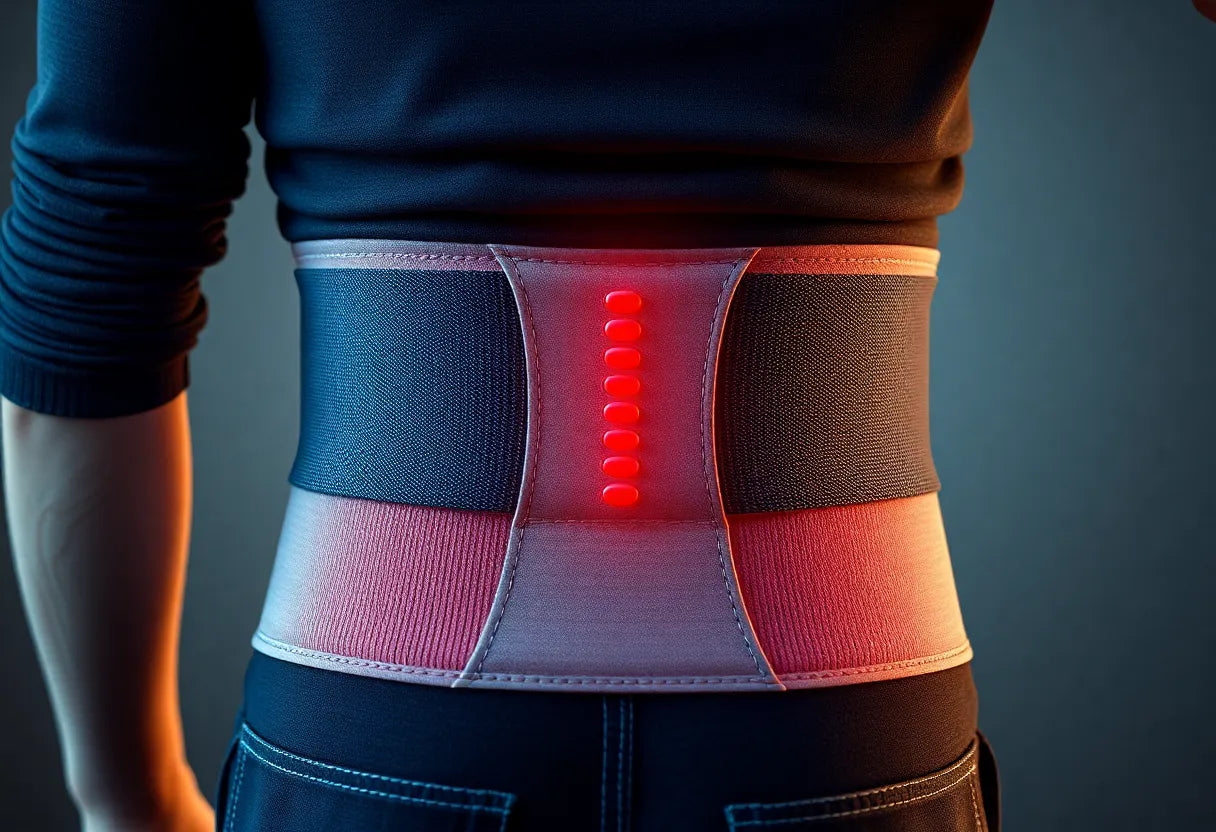Understanding the nuances of a hunched back, medically known as hyperkyphosis, is essential for anyone looking to improve their posture and overall health. A hunched back is characterized by an excessive curvature of the upper spine, leading to a forward-leaning posture. This condition can significantly impact one's physical appearance and comfort, often resulting in muscle tension, back pain, and even breathing difficulties. Common causes of hyperkyphosis include prolonged sitting, poor posture habits, and the natural aging process, all of which contribute to the weakening and tightening of certain muscle groups.
why correcting a hunched back is crucial
Addressing a hunched back is not just about aesthetics; it’s about enhancing your quality of life. Improved posture can lead to reduced back and neck pain, increased energy levels, and enhanced mobility. By correcting a hunched back, you're also promoting better spinal health, which is crucial for maintaining balance and preventing falls, especially as you age. Additionally, proper posture can boost confidence and improve your overall well-being.
exercise: a natural solution for posture improvement
One of the most effective ways to combat a hunched back is through targeted exercise. Exercise not only strengthens the muscles that support the spine but also increases flexibility and mobility, making it a natural and effective approach to posture correction. By incorporating specific exercises into your routine, you can gradually realign your spine, relieve tension, and build the necessary muscle strength to maintain a healthy posture.
In the following sections, we will delve into a series of exercises specifically designed to address hyperkyphosis. These exercises focus on mobilizing the spine, stretching the chest and shoulders, and strengthening the back muscles. By dedicating time to these exercises regularly, you can achieve noticeable improvements in your posture and overall physical health. Stay tuned as we explore these exercises in detail, providing you with the tools you need to straighten up and live a more comfortable, confident life.
research-backed benefits of hunched back exercises
Addressing hyperkyphosis through exercise is not just a trend but a scientifically supported approach. Research, such as the Study of Hyperkyphosis, Exercise, and Function (SHEAF) at UC Davis Health, underscores the positive impact of targeted exercises on posture and physical function. These studies highlight how a structured exercise regimen can reduce the curvature of the spine, improve mobility, and enhance overall quality of life, particularly in older adults. By integrating these exercises into your routine, you can leverage their benefits to counteract the effects of prolonged sitting and poor posture.
essential exercises for correcting a hunched back
To effectively combat a hunched back, it’s crucial to focus on exercises that target the thoracic spine, shoulders, and upper back muscles. Here are some key exercises to incorporate into your routine:
thoracic extension stretch
Instructions: Begin by sitting on a chair with a firm back. Place your hands behind your head, elbows pointing outwards. Slowly arch your upper back over the backrest of the chair, focusing on extending the thoracic spine. Hold this position for 10-15 seconds and repeat 3-5 times.
Benefits: This stretch helps increase mobility in the thoracic spine and relieves tension, counteracting the forward rounding associated with a hunched back.
foam roller mobilization
Instructions: Lie on your back with a foam roller placed horizontally under your upper back. Support your head with your hands and gently roll back and forth over the roller, focusing on the thoracic region. Perform this exercise for 1-2 minutes.
Benefits: Foam roller mobilization aids in releasing tightness in the upper back and opens up the chest, promoting better posture.
up and overs
Instructions: Stand with feet shoulder-width apart, holding a light weight or a resistance band. Raise your arms overhead, then bring them down in a wide arc to your sides, and back up again. Repeat 10-15 times.
Benefits: This exercise enhances shoulder mobility and strengthens the upper back, which is essential for correcting forward shoulder posture.
band pull aparts
Instructions: Hold a resistance band with both hands, arms extended in front of you. Pull the band apart by squeezing your shoulder blades together, keeping your arms straight. Return to the starting position and repeat 15-20 times.
Benefits: Band pull aparts strengthen the upper back and shoulders, improving muscle endurance and alignment.
double chin move
Instructions: Sit or stand with your back straight. Tuck your chin towards your neck, creating a 'double chin' effect, without tilting your head forward. Hold for 5 seconds and repeat 10 times.
Benefits: This exercise strengthens neck muscles and aligns the head with the spine, reducing neck strain.
prone YWT’s
Instructions: Lie face down on the floor. Lift your chest slightly and extend your arms overhead in a 'Y' shape, then move them to a 'W' and finally a 'T' shape. Hold each position for a few seconds and repeat the sequence 5-10 times.
Benefits: Prone YWT’s effectively strengthen the entire back, enhancing postural support and muscle balance.
Incorporating these exercises into your regular routine can lead to significant improvements in posture and physical health. By dedicating time to these targeted exercises, you can work towards a straighter, more comfortable, and confident posture.
consistency and complementary aids for posture improvement
Consistency is paramount when it comes to correcting a hunched back. Regularly performing the exercises outlined in the previous section can lead to long-term improvements in posture, reducing discomfort and enhancing your overall quality of life. Aim to integrate these exercises into your routine at least 3-4 times a week to ensure steady progress. Remember, the key to success lies in maintaining a disciplined approach, allowing your muscles to gradually adapt and strengthen over time.

Women's Posture Shirt™ - Black
Supports muscles and improves posture—ideal for reducing pain and tension throughout the day.

Men's Posture Shirt™ - White
Patented shirt activates muscles and helps maintain spinal alignment for better posture and pain relief.
In addition to exercise, incorporating ergonomic aids into your daily routine can further enhance your efforts in correcting a hunched back. Products like those offered by Anodyne can provide essential support, helping you maintain proper posture throughout your daily activities. Ergonomic chairs, cushions, and posture braces are designed to support the spine and encourage a natural alignment, complementing the benefits of your exercise regimen. By combining these aids with regular exercise, you can create a holistic approach to posture improvement, ensuring sustainable and effective results.
frequently asked questions
how often should I do these exercises?
Aim to perform these exercises at least 3-4 times a week for optimal results. Consistency is key to achieving and maintaining improvements in posture.
can these exercises be done at home?
Yes, these exercises are designed to be performed at home with minimal equipment, making them convenient and accessible for everyone.
how soon will I see results?
With consistent practice, you can expect to see noticeable improvements in posture and a reduction in pain within a few weeks. However, results may vary depending on individual circumstances.
are these exercises suitable for all ages?
Generally, these exercises are suitable for individuals of all ages. However, it is advisable to consult with a healthcare provider if you have specific health concerns or conditions before starting any new exercise regimen.
can I use ergonomic aids during these exercises?
Yes, ergonomic aids can be used to provide additional support and enhance the effectiveness of your exercise routine. They can help you maintain proper posture and alignment, both during exercises and in everyday activities.
By committing to a regular exercise routine and utilizing ergonomic aids, you can effectively address a hunched back and enjoy the benefits of improved posture and overall well-being. Embrace this journey towards a healthier, more confident you.
Källor
- UCSF News. (2017). "Physical Therapy Can Help Straighten Hunched Back in Older People."
- National Center for Biotechnology Information. "Research on Hyperkyphosis and Exercise."
- ACC Vietnam. "Lesser-Known Exercises to Correct Hunchback Posture."
- National Center for Biotechnology Information. "Impact of Exercise on Posture and Mobility."
- Healthline. "Kyphosis Exercises: Improve Your Posture."
- Harvard Health Publishing. "Is It Too Late to Save Your Posture?"
- Mayo Clinic. "Back Pain: Tips to Protect Your Spine."
- Times of India. "Get Rid of Hunchback: Try These 5 Simple Exercises."
- Samaritan Health Services. "Stay Upright as You Age with Three Exercises."


















